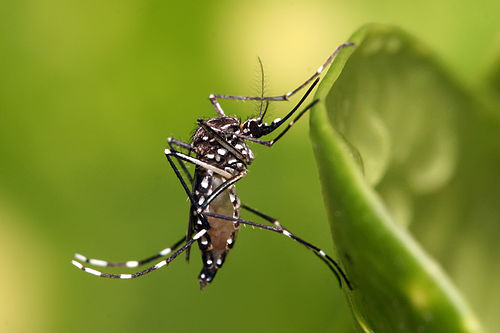Facts for Kids
Mosquitoes are small flying insects belonging to the family Culicidae, known for their blood-feeding habits and ability to transmit various diseases.
Overview
Types Of Mosquitoes
Behavior And Feeding
Anatomy Of Mosquitoes
Habitat And Distribution
Life Cycle Of Mosquitoes
Mosquitoes And Human Health
Control And Prevention Measures
Ecological Impact Of Mosquitoes

Inside this Article
World Health Organization
Carbon Dioxide
Urban Areas
Helicopter
Antarctica
Population
Weather
Insect
Fever
Did you know?
🦟 Mosquitoes are known to be the deadliest animals on Earth due to the diseases they transmit.
💧 Female mosquitoes require standing water to lay their eggs, which can lead to large populations in humid areas.
🌙 Mosquitoes are most active at dusk and dawn when their preferred prey is typically more available.
🍴 Only female mosquitoes feed on blood, as they need the nutrients to produce eggs.
🌍 There are over 3,500 species of mosquitoes worldwide, adapted to various climates and environments.
🛡️ Mosquitoes are carriers of several harmful diseases, including malaria, dengue fever, Zika virus, and West Nile virus.
👃 Mosquitoes are attracted to carbon dioxide and heat, making humans easy targets.
🌱 Some species of mosquitoes can survive in extremely harsh environments, including frozen conditions.
🔊 Male mosquitoes are known for their distinct mating dance, which involves a unique buzzing sound.
📊 Mosquitoes can sense human body odor and sweat, guiding them to their next meal.
Introduction
They can be found all around the world, except in very cold places like Antarctica! There are over 3,500 different types of mosquitoes! They are best known for their bites, which can be itchy and annoying. Did you know that female mosquitoes are the ones that bite? That's because they need blood to lay their eggs. Male mosquitoes feed on nectar and do not bite! Mosquitoes live in many environments, including forests, ponds, and even your backyard! 🌳
Types Of Mosquitoes
One common type is the Aedes aegypti, which spreads diseases like dengue fever. Another important group is the Anopheles mosquitoes, which transmit malaria. 🦠
The Culex pipiens, also known as the common house mosquito, likes to live near humans and is often found in cities. Each type of mosquito can live in different places and has different biting habits! 🏙
️
Behavior And Feeding
Female mosquitoes use their proboscis to suck blood from animals, while males only drink nectar from flowers. They are attracted to our warmth, sweat, and carbon dioxide. Did you know mosquitoes can smell blood from a distance of 100 feet? 🏃
♂️ When they bite, they inject saliva to help them suck more blood, which can cause itching! Some people are bitten more than others – this is because of differences in skin microbes and body chemistry! 🧪
Anatomy Of Mosquitoes
Habitat And Distribution
They lay their eggs in ponds, swamps, marshes, and even puddles. You can find them worldwide, from tropical rainforests in the Amazon to grassy fields in North America! 🌳
Some types of mosquitoes thrive in warm climates, while others can survive colder weather. For example, the Culex pipiens can be found in North America and Europe, often in urban areas. With so many types of mosquitoes, they are present in almost every environment where there is water! 🔍
Life Cycle Of Mosquitoes
The female lays eggs in water, where they hatch into tiny larvae. These larvae live in water and eat tiny plants and algae. After about a week, they turn into pupae, which look like little cocoons. 🐛
The pupae then transform into adult mosquitoes! This process can take about 10 days in warm weather. Adult mosquitoes can live for weeks or even months! Isn’t it cool how they go through these changes to become flying insects? ✈
️
Mosquitoes And Human Health
They can carry diseases like malaria, dengue, Zika virus, and West Nile virus. According to the World Health Organization, malaria makes over 200 million people sick every year. 🦠
This is why it's important to protect ourselves from mosquito bites, especially in areas where these diseases are common. Wearing long sleeves, using insect repellent, and staying inside during peak biting times can help! Educating ourselves and others can save lives! 🛡
️
Control And Prevention Measures
️ One great method is removing places where they can breed, like standing water in buckets or puddles. Covering water containers and using screens on windows can help keep them out of our homes. Additionally, using insect repellent and wearing long-sleeved clothing can keep you protected during outdoor activities! 🌳
Some communities spray insecticides and set traps to reduce mosquito numbers, making it a safer place to enjoy! Staying informed and working together can lead to healthy environments! 🤝
Ecological Impact Of Mosquitoes
They are food for many animals, including birds, bats, and frogs. 🐸
Some species are also important pollinators, helping flowers to grow and reproduce. The larvae of mosquitoes help clean water by breaking down organic material. However, when there are too many mosquitoes, they can upset the balance in ecosystems. So, controlling their population helps to keep nature healthy and balanced! ⚖
️

